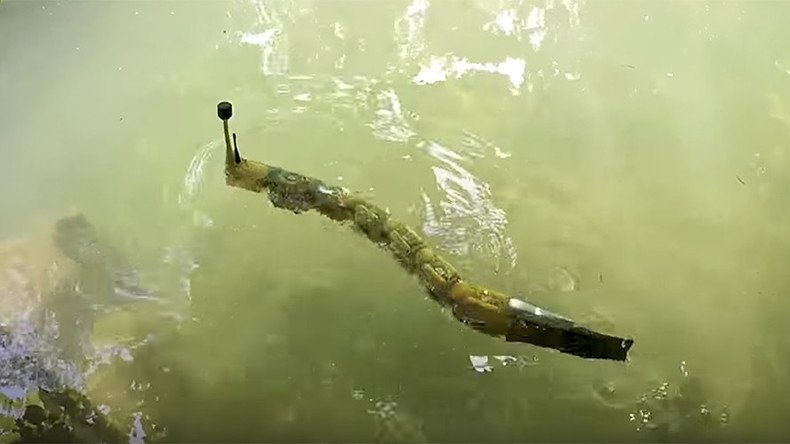Freaky robotic eel to pinpoint poisonous metals in rivers & lakes (VIDEO)

A bizarre robotic eel that squirms around open water and pinpoints the source of pollution is on the way, thanks to Swiss researchers.
Developed by scientists at the EPFL Institution in Lausanne, Switzerland, Envirobot takes its inspiration from the aquatic world.
Shaped like a snake or eel, the device is fitted with a number of sensors that can reportedly detect chemical spills and the existence of poisonous heavy metals in bodies of water.
READ MORE: High-tech angling? Underwater drone lures fish with blue light (VIDEO)
Approximately 1.5 meters (5ft) long, the Envirobot can operate autonomously or via remote control.
With the ability to map areas in real-time, the electric-motor powered snake is tipped to make the task of cleaning contaminated water less arduous.
According to Auke Ijspeert, head of the EPFL Biorobotics Laboratory, the early stage eel robot could trump conventional pollution detection devices in a number of ways.
“They can take measurements and send us data in real-time – much faster than if we had measurement stations set up around the late,” he said.
“And compared with conventional propeller-driven underwater robots, they are less likely to get stuck in algae or branches as they move around. What’s more, they produce less of a wake, so they don’t disperse pollutants as much.”
The Envirobot, the body of which can be disassembled, has already been tested in Lake Geneva, where it managed to detect increased salination in the water.
“We obviously can’t contaminate a lake like we do the test water in our lab,” said Jan Roelof van der Meer, a coordinator of the Envirobot project.
“For now, we will continue using salt as the contaminant until the robot can easily find the source of the contamination. Then we will add biological sensors to the robot and carry out tests with toxic compounds.”












